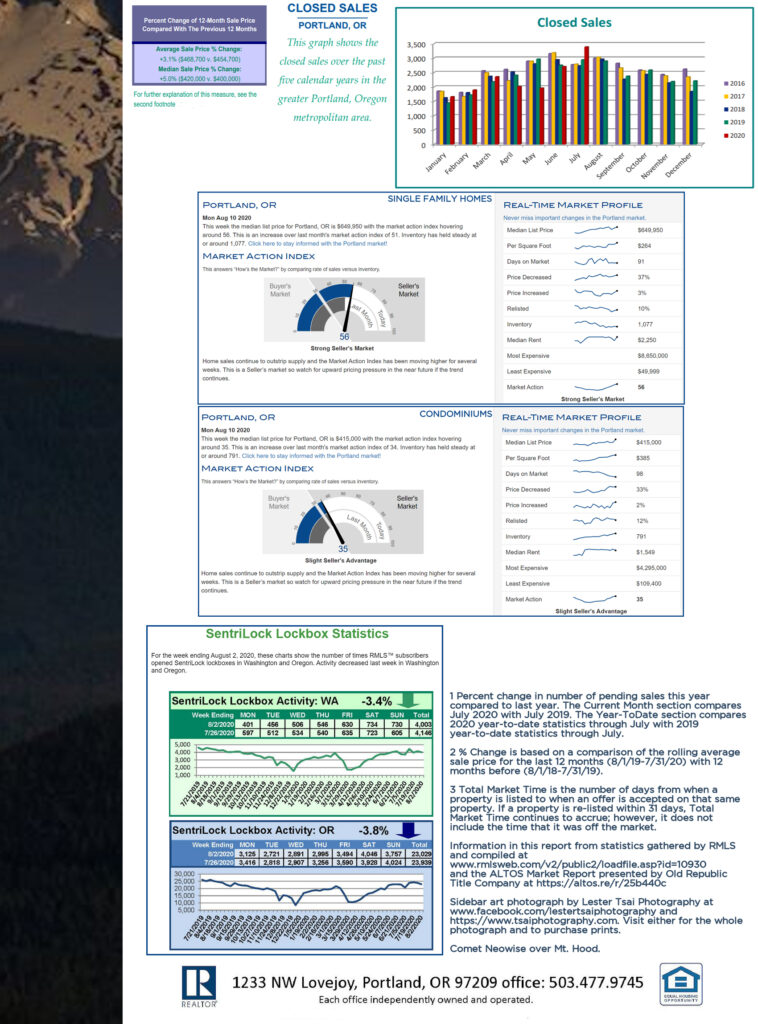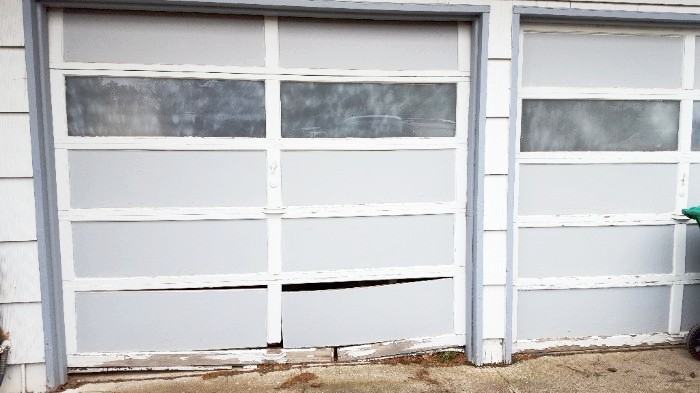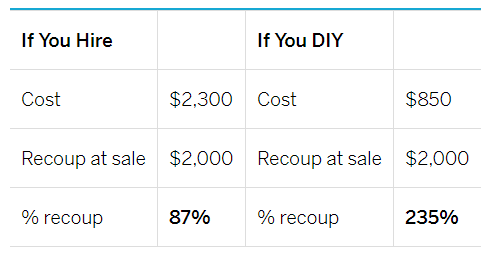
Real Estate Facts



| We have the lowest inventory of homes since 2015! If you have an ugly house or are thinking of selling any time this year, NOW is the time! |
| If you’re thinking of selling, call me as soon as possible to get a free, no-obligation market analysis of your home! Call me at 503.793.3345 or email me at goodnightchristy@gmail.com! |


Invention of the year? This is an electricity-free, 90% recyclable screen that fits an entire garage door space. It even has a sliding door inserted in the middle for walking in and out of the garage. Now your garage door can become a giant open window, letting you enjoy a mosquito-free breeze this summer while tinkering (or socializing) in your garage.
You’ve gotta see it in action.

OverHeadDoorPDX – Your garage door is a huge entry point to your home – which is great for you… but potentially can also be great for burglars. Most garage burglaries can be prevented by taking a few simple steps to secure your doors. Here are the some of the most important things you can do to help keep your garage (and home) safe:
1)Don’t leave the garage door remote in your vehicle! Whether while you are away from home or parking outside of your garage, if someone steals the remote from your car, they have a way into your home. So, don’t leave the remote clipped to the visor. Either take it with you or (preferably) replace that sizeable remote with a small keychain version!
2)Secure your garage door emergency release. It is relatively easy and quick to learn how to put some zip-ties on your emergency release, so that it retains it’s intended function, but cannot be released by intruders. Here you can see details about how to do this.
3)Don’t leave your garage door open! An open garage door is practically asking for trouble, even if you live in an extremely safe neighborhood. It’s a good idea to make sure your garage door closes completely. Don’t just hit the remote button and then drive away – wait to make sure it closes and doesn’t reopen. Perhaps, though, you (or someone else in your household!) tend to forget to close the door. You can install a device that signals your garage door opener to close the door after a predetermined amount of time. You can set the amount of time that elapses before the door closes, or override the control if you want the door to remain open.
4)Frost or cover your garage windows. This way, thieves cannot see what is in your garage and they can’t see when your car is gone. Use can use curtains, shades or blinds. If you want to still allow light is, there are translucent films you can apply to the glass that obscures vision but still allows in light.
5)Make sure your garage door opener is no longer set to the factory settings. If so, your garage is vulnerable to other openers from the same factory. Make sure to reset any codes.
6)When you go away on vacation, unplug the garage door opener. If you don’t have an opener, padlock the latch or disable the door by putting a bolt through one of the holes in the garage door track. This will prevent someone from coming in through the overhead door while you’re away.
7)Don’t neglect maintenance on the mechanical parts of your garage door!
Additionally, don’t forget about the door from your garage into your house. Make sure that is a strong door that locks well. You might even consider putting peephole into that connecting door. That way, if you hear anything unusual, you will be able to see what is going on without opening the door to the garage to find out.
Your garage and garage door can be one of the most valuable and most used parts of your home. Do what you can to make sure it is not also one of the most vulnerable. If you have any questions, we are more than happy to assist!
By Aly J. Yale July 30, 2020
https://money.com/get-the-lowest-mortgage-rate/
Snagging a low mortgage rate is the ultimate win for a homebuyer. Not only does it mean a lower monthly payment and paying less interest over time, but for some buyers, it could also open the door to a larger or more expensive property.
But qualifying for the best mortgage rate? That takes some work—not to mention good credit and a decent-sized down payment. If you’re on the hunt for the market’s lowest rates, here’s what mortgage pros recommend:
Credit—both your history with it and your credit score—can have a significant impact on what interest rates you’re eligible for, as well as your ability to qualify for a mortgage at all.
“Basically, your credit score helps lenders evaluate your ability to pay back your loans,” says Sarah Pierce, head of sales at online mortgage lender Better.com. “The higher your credit score, the better rates you’ll be able to get.”
A look at recent rates proves as much. According to Money’s survey of over 8,000 mortgage lenders, on a day in July borrowers with credit scores of 740 or higher enjoyed rates as low as 3.096%. Borrowers with scores under 640 were getting 5.096%—at the lowest. On a 30-year, $200,000 loan, that’s a difference of $231 per month and more than $83,000 over the life of the mortgage.
Pierce recommends buyers check their score well before shopping for a home—or a loan. “If you have a lower credit score and a flexible timeline, you may want to wait and try and raise your score before applying so you can qualify for better rates,” she says.
Paying down balances, settling up overdue accounts and asking for a credit line increase are all ways to boost your credit score. Pulling your credit report and reporting any errors may help, too, though this can sometimes take a while.
A 20% down payment isn’t necessary on most mortgage loans, but when you’re looking for low rates, it certainly can’t hurt. That’s because a bigger down payment lowers the loan-to-value ratio of a mortgage—or how much of the home’s price the lender is financing.
Lower LTV loans often come with lower interest rates than others, as they’re less risky for the lender to take on. “The rates reflect the risk,” says Joe Tyrrell, chief operating officer at mortgage technology provider Ellie Mae. “If a homebuyer can put more than 20% down, they will usually get a lower interest rate.”
In addition to giving you a better shot at a lower rate, larger down payments can also help you avoid private mortgage insurance, which protects the lender and adds both an upfront and monthly cost to your home purchase. According to mortgage purchaser Freddie Mac, the average cost is between $30 and $70 per month.
Lenders use your debt-to-income ratio to evaluate your ability to afford a mortgage. This indicates how much of your income is spoken for by monthly debt payments—as well as how much you have available for a potential new home purchase.
Here’s an example: A borrower who earns $4,000 per month after taxes and owes $2,000 in monthly debt would have a debt-to-income ratio of 50% ($2,000 divided by $4,000). According to Tyrrell, this would be too high to qualify for the lowest interest rates. “Typically, borrowers who get the better rates have a current debt-to-income ratio that is less than 42%—which would include their new mortgage payment,” Tyrrell says.
For borrowers above this 42% mark, the fix is clear: Either pay down some existing debt or increase your income. According to Pierce, refinancing or consolidating any current loans—like car or student loans—can also help. This often lowers your monthly payment, reducing your debt-to-income ratio in step.
Most people shop around when buying a new car or TV, and according to the experts, it’s even more important when getting a mortgage. “The biggest mistake homebuyers can make is going with whatever lender their real estate agent recommends,” Pierce says. “Don’t settle on the first rate you find.”
The truth is interest rates vary wildly by lender—often due to their volume, internal costs to process the loan and many other factors. To ensure you’re getting the best deal, experts recommend getting quotes from at least three lenders—ideally from a mix of institution types, including banks, credit unions and online lenders.
When doing this shopping, Pierce says it’s critical you ask for a loan estimate from each company you consider. “No matter what a lender says, the only way to validate an offering and compare two options apples-to-apples when you’re rate shopping is to get an official loan estimate,” she says. “Unlike a fee sheet or any other document a lender may give you, a loan estimate is a standardized document detailing all the costs associated with your mortgage.”
According to Freddie Mac, borrowers who get at least one additional rate quote save around $1,500, while those who get five quotes double those savings over the life of the loan.
For borrowers who don’t have the time or interest to comparison-shop, a mortgage broker may be able to help. “If you go to a mortgage broker, you don’t have to shop around,” says Hernan Garcia, owner of Oakdale Mortgage in Houston. “We’re doing the shopping around for you. It’s kind of a one-stop-shop. We’re shopping for you and getting you the absolute best available in the market at the time.” Brokers do come with added fees—usually around 1-2% of the loan amount. However, these are often paid by the lender.
Borrowers can often achieve a lower interest rate just by shortening their loan term. In 2019, the average rate on a 30-year mortgage was 3.94%, according to Freddie Mac. On 15-year loans, it was 3.39%—nearly sixty basis points lower.
The catch is that payments are higher on these loans. At 2019’s average rates, a $200,000 loan would come with a $947 payment on a 30-year term and a $1,418 payment on a 15-year term. Borrowers will need to prepare for these higher payments before opting for a shorter-term loan.
The same goes for adjustable-rate mortgages, which typically have lower interest rates, too. The caveat with these loans, often called ARMs, is that the rate can increase after a set amount of time—usually five, seven, or 10 years into the loan.
This obviously comes with some risk, but according to Tyrrell, for the right borrower—particularly one who doesn’t plan to be in the home too long, an ARM can be a smart way to save cash. “During those first few years, even a quarter of a percentage point can mean a savings of a few hundred dollars a month,” Tyrrell says.
According to Mary Foster, a mortgage loan originator at Affinity Federal Credit Union, the key is knowing how long you plan to stay in the home.
“For a seven-year adjustable-rate mortgage, it’s going to be fixed at that lower rate for seven years, and then it’s going to adjust in year eight,” says Foster. “Where are you going to be in year eight when that loan adjusts?”
Discount points allow you to purchase a lower interest rate. A point costs 1% of the loan amount—so $2,000 on a $200,000 mortgage—and reduces the interest rate fractionally, usually around 0.25%. For a borrower originally quoted a 3.5% rate, buying a point would mean a new rate of about 3.25% instead.
If you’re set on getting a lower mortgage rate, you can certainly achieve your goals with discount points, but according to Foster, it’s not the right move for everyone. “See how long it’s going to take you to recoup that money you put out for the points,” she says.
Buyers will want to make sure they can hit the break-even point before buying points. If a point costs $2,000, for example, and saves you $20 per month, it will take 100 months—or over eight years—to break even. If you’re not sure you’ll be in the home that long, points probably aren’t worth the cost.
Once you secure a low interest rate you’re comfortable with, you’ll need to lock it in with the lender. This ensures your rate can’t change before the loan closes—even if market rates rise during that time.
But buyer beware: Sometimes rate locks cost extra—particularly on longer lock periods. In a rising rate environment, these may be worth the added fee, but borrowers should talk to their loan officer about the right move for their particular situation. “Use a loan officer you have confidence in and trust,” Foster says. “It takes a village.”
Jeremie Buchholtz needed a spot to stay when he was splitting his time between Paris and Bordeaux, France. This photographer’s budget was limited, and he wasn’t up for staying in roach motels every time he visited Bordeaux. He happened to find a garage for sale within his budget and wondered if he could turn it into something livable.
As luck would have it, his friend, Matthieu d Marien, specializes in converting odd spaces into homes. With his genius, and a lot of tenacity, they turned this run down garage into an abode worth vacationing in!

De Marien knew his friend had found a special space. But he had some restrictions when remodeling – the roof couldn’t be touched, which meant sunlight would have to come in another way. De Marien carved a 129 square foot patio out of the small space, leaving only 441 square feet of living space.
In order to make the interior space feel larger, De Marien created a “house within a house”: one large piece of furniture that includes the bathroom, bedroom, office, closet, a sofa bed and all of the home’s storage. With everything contained in this large furniture box, there’s plenty of living space left over.
Take a look at the video [above] to see Jérémie’s garage home now! It’s an amazing redesign of a small space!

You’re going to save money on DIY home improvement projects. Sure, everybody knows that. But did you know how much? Cut professionals out of the equation and you can save half the cost of a project — or more.
Tired of looking at that big blank billboard every time you pull into your driveway? Change out your old garage door for a spiffy new steel model and the whole neighborhood will thank you. Save some cash by keeping the same motorized opener.
A steel garage door comes in four panels that are relatively lightweight but awkward — get a friend to lend a hand and you’ll have this project done in a day. Then stand back and admire along with 95% of homeowners in the “Remodeling Impact Report” who said they were happy or satisfied with their new garage door.

A steel garage door comes in four panels that are relatively lightweight but awkward — get a friend to lend a hand and you’ll have this project done in a day. Then stand back and admire along with 95% of homeowners in the “Remodeling Impact Report” who said they were happy or satisfied with their new garage door.
– HouseLogic

Larry Myers Garage Doors Blog talks about the “Smart Garage”
Technology has completely revolutionized how we live our day-to-day lives. Nowadays, we can use our smartphones to do virtually anything, from calling our friends, to booking tickets, to buying groceries, to paying our bills. How can we use technology to make managing our homes easier? In this edition of the Larry Myers Garage Door blog, meet the “smart” garage.
Smart Garage Door Systems
Smart garage door openers allow you to monitor and control your garage door, gate, or lighting, all from your tablet, smartphone, or computer.
Benefits of Smart Garage Door Openers
What are the benefits of this type of smart garage door opener, such as LiftMaster’s MyQ technology (which we recently wrote a product feature about!)? Below, we’re listing a few benefits of smart garage door openers.
Added Layers of Security
Forget to close that door? Smart garage door openers allow you to check the status of your garage door while you’re away, allowing you to control it from afar
Some smart garage openers have something called vacation mode, which disables the remote controls, meaning that the garage door can only be opened from the inside.
Automatic Maintenance Checks
Some smart garage systems have additional safety features. LiftMaster, for example, created a 3-step safety check, which quickly monitors the performance of safety features such as photo eyes or auto-reverse. This makes it easier to monitor the functionality of your garage door opener, signaling when it might need maintenance.
Energy Conservation
Smart garage systems allow you to monitor lighting, too. Not only does this add an extra layer of security, allowing you to turn on extra lights while you’re away from home for extended periods of time, but it also allows you to save on energy bills by not keeping lights on 24/7.
Additionally, many smart garage door systems are easily integrated with smart thermostats, allowing you to control the temperature of your home while you’re away. For example, LiftMaster, one of the smart garage door opener brands we carry here at Larry Myers Garage Doors, is a Nest partner.
Monitor Activity
Smart garage door openers log when the door has been opened or closed, allowing you to better monitor the activity in your garage. Additionally, many smart garage door openers have cameras, allowing you to view the activity in your garage.
Easy to Install
If you’re interested in safeguarding and optimizing your garage with the latest technology, your local garage door experts here at Larry Myers Garage Doors in Portland, OR will be glad to assist you. Reach out to us today to discuss your “smart” garage options!

Well, honestly, it’s probably going to be jeans anyway, but is it nice jeans or, yanno… with paint on them.